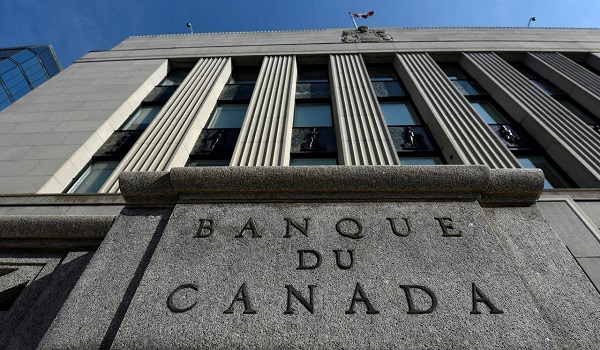Rate relief from Bank of Canada will pave the way for stronger consumer spending
The Bank of Canada’s shift to cutting interest rates will alleviate some of the financial pressure facing Canadians and lead to a pickup in consumer spending, although some households may be wary of quickly opening their wallets.
The central bank, which lowered its trend-setting policy rate to 4.75 per cent from 5 per cent on Wednesday, is widely expected to announce further cuts over this year and next. Bank of Canada governor Tiff Macklem has stressed that this process will likely be gradual and that future decisions will hinge on economic data.
Wednesday’s decrease will bring modest financial relief to borrowers. But as more cuts are announced, debt-servicing charges will become less onerous for many households, creating room in family budgets for discretionary purchases that were shelved in recent years in favour of financial prudence.
Economists said the central bank’s pivot could also lift the spirits of consumers who have been exceptionally pessimistic about the economy as they faced the double whammy of decades-high inflation, followed by aggressive rate hikes to bring price growth under control.
A single rate cut “doesn’t mean that households are immediately going to go out and start spending,” said Carrie Freestone, a Royal Bank of Canada economist.
However, “once we start to see the Bank of Canada steadily cut rates, that will ease people’s minds, and they’ll feel like they can start going out and spending a little bit more.”
As part of its inflation-fighting campaign, the Bank of Canada deliberately sought to temper demand in the economy through higher interest rates. As a result, the average household is spending 15 per cent of its after-tax income on debt payments – among the highest levels on record – which is crowding out room for some purchases.
Retail sales have stagnated in real terms over the past three years, and once Canada’s soaring population growth is accounted for, they’re in decline. Per capita spending on goods has fallen for 10 consecutive quarters. The impact has been large for retailers tied to the real estate slump, such as sellers of furniture and home appliances.
Greg Hicks, president and chief executive officer of Canadian Tire Corp., told investors last month that his company was like “a barometer” for the domestic economy.
“Macroeconomically, the increased cost of living, combined with higher interest rates, has created a period of hesitation among Canadian consumers,” he said. “This has had an obvious impact on our operations.”
Stewart Schaefer, president and CEO at Sleep Country Canada Holdings Inc. ZZZ-T +1.68%increase
, said the slowdown in discretionary spending had been going on for about 18 months.
However, Mr. Schaefer noted that customers weren’t trading down to cheaper products. “It tells me they’re healthy, but they are pausing a little bit on that purchase,” he said on a May earnings call.
Even so, there are various signs of distress. Personal insolvencies are on the rise, although they are similar to levels in 2019 in per capita terms. Among households without a mortgage (renters and outright homeowners), overdue payments on credit cards and auto loans have climbed to prepandemic levels and continue to grow.
“We’re still in a backdrop where households are pretty squeezed,” said RBC’s Ms. Freestone, who suspects the household debt-service ratio has not yet peaked.
A big question for the economic outlook is how mortgage renewals play out.
The Bank of Canada’s recent Financial Stability Report said that roughly half of all outstanding mortgages are held by borrowers who have yet to face higher rates because of their loan structures.
Many of these borrowers took on mortgages with low, variable rates and five-year terms in 2020 and 2021, during a frenzied period for homebuying. Variable-rate mortgages often have a fixed payment, so as interest rates rose, more of the monthly payment was dedicated to interest and less to paying down the principal.
Royce Mendes, head of macro strategy at Desjardins Securities, said variable-rate borrowers represent the “biggest risk” among those renewing their mortgages in the coming years.
The numbers on household savings suggest borrowers are hunkering down in advance, which complicates the outlook for consumption.
Net of pension entitlements, the average household with a mortgage saved roughly $8,000 last year, according to Statistics Canada estimates. From 2012 to 2019, the annual average was $2,000.
“I do believe that some households have already changed their spending habits in anticipation of the shock for mortgage renewals,” Mr. Mendes said.
The shift to lower interest rates could lead to improvements in consumer confidence, which has been especially dour in figures produced by the Conference Board of Canada.
Wednesday’s cut “will give at least a small bump to sentiment among borrowers, and brighten the mood in what has been a remarkably quiet housing market,” Bank of Montreal chief economist Doug Porter wrote to clients. “As rates continue to gradually recede in coming quarters, the weight will be lifted off the struggling household sector, likely setting the stage for a modest improvement in growth in the year ahead.”
Despite various risks to the outlook, Mr. Mendes said the Canadian economy is still capable of achieving a soft landing, in which inflation is brought under control without experiencing a recession.
“The idea that rates are coming down and we’re not in a recession, that’s really good news,” he said. “That’s as good as we could have hoped for.”
This article was first reported by The Globe and Mail













